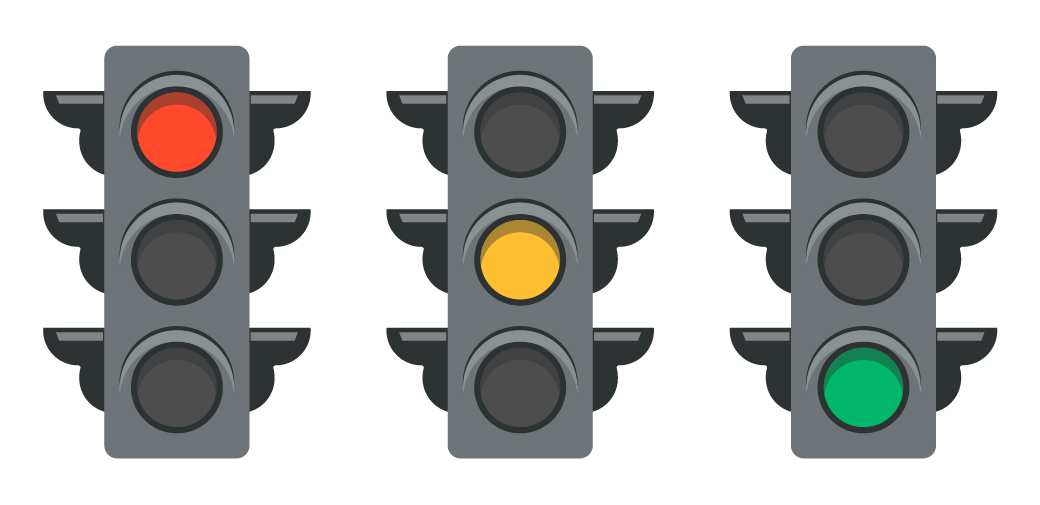TRAFFIC SIGNALS
Traffic signals are electronically operated devices that tell motorists when to stop, go and use caution by assigning right-of-way to each approach and movement.
They are operated by a computerized system that cycles through different color indications at specific intervals. Those color indications and their meanings are green for go, red for stop, and yellow for the cautionary warning that green has ended and red is about to begin.

Traffic signals are one of the most used traffic control tools, as they can be effective for improving traffic flow, mobility and safety.
Benefits
-
Traffic flow: Traffic signals improve the orderly flow of traffic by controlling when vehicles stop or go in each direction at an intersection, which reduces back-ups and congestion.
-
Mobility: Traffic signals improve mobility by adjusting and coordinating signal times based on traffic volumes and times of day. Coordinated signal timing is especially helpful in improving mobility down a major corridor with multiple signals.
-
Safety: When implemented at locations above certain traffic volume thresholds, traffic signals enhance safety by assigning right-of-way and managing crossing points between vehicles, pedestrians and other non-motorized vehicles.
When to use a traffic signal
Traffic signals are used at intersections when certain traffic volume thresholds are met. State and local agencies will often use traffic signals to:
-
Control traffic flow,
-
Optimize travel times, and
-
Prioritize movements such as left turns or pedestrian crossings.
Traffic signals are most effective when there is a need to stop major roadway traffic to allow minor roadway traffic to cross or enter the traffic flow of the major roadway.
To determine if an intersection needs a traffic signal, officials must follow uniform federal guidelines and perform traffic studies that examine vehicle volumes, pedestrian volumes and other factors.
Every traffic signal in the U.S. is installed using the same federal guidelines.
When NOT to use a traffic signal
Traffic signals are not a solution for every intersection. Signals placed at intersections that don't meet certain traffic volume thresholds can negatively affect safety and efficiency by leading to:
-
Excessive delays.
-
Increased traffic congestion.
-
Increased air pollution and gas consumption.
-
Higher crash frequency, particularly with rear-end collisions.
-
More frequent use of less-adequate streets to avoid signals.
-
Drivers disobeying signals.
There are numerous alternatives to traffic signals, such as Restricted Crossing U-Turns (RCUTs) or roundabouts, that improve traffic flow and increase safety by channelizing traffic in a manner that reduces conflicts and the risks of the most severe crashes.
Traffic Signals in Kentucky
US 68/W 4th St Fayette County
